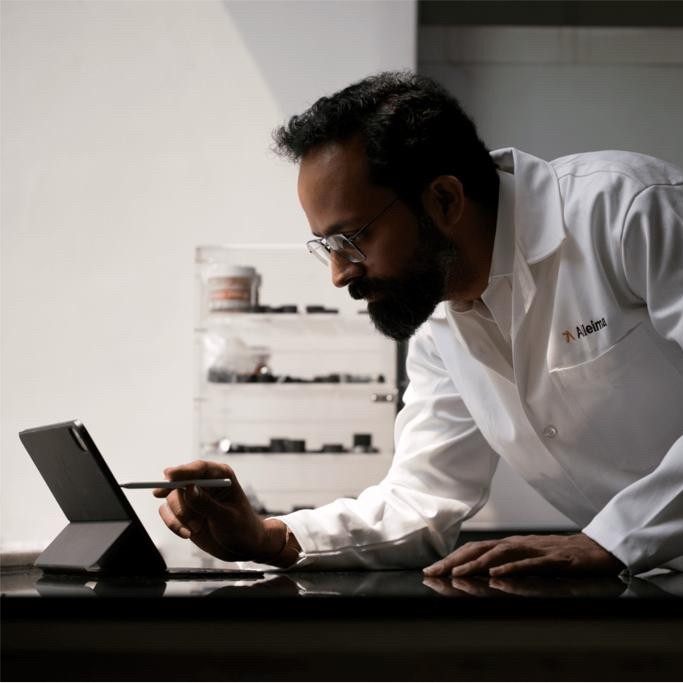India’s chemical industry is projected to grow from 11 to 12 percent from 2021 to 2027, followed by a growth rate of 7 to 10 percent from 2027 to 20401. This trend will mainly be driven by increased domestic consumption within the country.
By Rohit Ojha, Technical Marketing Specialist, Alleima

Over the next 20 years, India is expected to use more than 20 percent of the world’s chemicals for lifestyle and communications needs, among others. This surge in demand will increase the country’s domestic chemical needs from around US$180 billion in 2021 to about US$1,000 billion in 2040.
In the chemical world, different types of corrosion from general wear and tear to more specific forms like stress corrosion cracking pose constant threats. According to International Zinc Association, India loses around 5-7 per cent of its Gross Domestic Product every year due to corrosion2. This isn’t surprising, given the aggressive nature of the liquids and gases used in the development processes, which can erode equipment and storage containers over time.
Reliable corrosion-resistant alloys
Alleima has been advancing industries through materials technology and driving innovation for over 160 years. Our high-value-added products in advanced stainless steel, special alloys, and industrial heating as well as offerings and in-depth expertise in materials technology, metallurgy, and industrial processes enable our customers to become more efficient, profitable, safer, while supporting greater sustainability. The chemical industry is no exception to this.
During the development process of our corrosion-resistant alloys, we conduct rigorous corrosion testing to ensure the quality and reliability of our products. Corrosion testing involves several challenges, some of them are listed below:
- In most cases, laboratory testing employs pure chemicals and highly oxygenated water solutions. The corrosion rate can significantly differ in environments devoid of oxygen.
- Corrosion test results can be misleading if unintentional impurities in the testing environment strongly influence the corrosion rate.
- High concentrations of organic acids and non-aqueous solvents, like benzene, exhibit low electrical conductivity, making corrosion testing challenging.
- Short-term tests on metals might not accurately represent long-term corrosion behavior. A metal may remain passive initially but corrode rapidly after prolonged exposure.
With us, our customers can have the peace of mind that our corrosion-resistant alloys come with the most accurate corrosion test data.
Selection of materials to overcome corrosion challenges
In our experience, advanced super austenitic stainless steels, duplex stainless steels, and nickel alloys have emerged as frontrunners in the battle against sever corrosion problems in the chemical industry. These alloys are mainly engineered with high levels of Nickel, Molybdenum, and Chromium to offer robust resistance to corrosion, making them indispensable in chemical processing.
- With each type of corrosion challenge comes a specific solution. Here are some examples of alloys used in some of the most common applications in chemical process industry:
- Organic acids, such as acetic acid and formic acid, present a unique set of challenges. Pure acetic acid itself is non-corrosive, yet the presence of impurities such as chlorides and formic acid in crude acid can lead to corrosion problems in 300 series steels. This is where duplex stainless steel
- SAF™ 2205, super duplex steel SAF™ 2507, and Alleima® 2RK65 are necessitated effectively counter aggressive conditions.
- Traditional graphite heat exchangers used in production of phosphoric acid often fail during maintenance because of their brittleness, leading to equipment breakdowns and production delays. Sanicro®28 is a specially engineered high-alloy multi-purpose austenitic stainless steel that outperforms others in handling phosphoric acid. It has consistently proven its exceptional performance and durability over many decades of service.
- The choice of construction material for equipment handling sulfuric acid largely depends on factors like acid concentration and temperature. Corrosivity peaks within the 20-80% concentration range, where Sanicro®28 has proven to be a reliable material for handling sulfuric acid. Alleima®SX, a high silicon-containing austenitic stainless steel, is specifically effective in concentrated sulfuric acid environments. It is particularly suitable for acid coolers, piping systems, towers, tanks, and various related components.
- Materials that resist the corrosive effects of nitric acid are critical. Alleima®2RE10, with its high chromium content, low impurity levels, and impressive resistance to nitric acid, proves to be an ideal choice for heat exchanger tubes and pipes in various nitric acid processes.
- Hydrochloric acid, especially at elevated temperatures, poses a formidable challenge for standard materials. Typically, highly alloyed nickel alloys such as C-276, C-22 and 625 are used in to handle these conditions. Sanicro®35, our latest ground breaking solution that combines the strengths of super austenitic stainless steels and nickel alloys, offers exceptional corrosion resistance, even in the harshest conditions. Corrosion tests have confirmed that the critical pitting temperature and critical crevice temperature of Sanicro®35 are on par, or better than Alloy 625. This offers Alleima’s customers to save costs by replacing the expensive nickel alloys.
Our mission of developing ground breaking alloys is supported by a fully integrated value chain encompassing R&D, rigorous testing, state-of-the-art melting rolling processes, and punctual delivery. We remain committed to effectively address our customers’ corrosion challenges so that they can operate efficiently as the chemical industry continues to expand.
